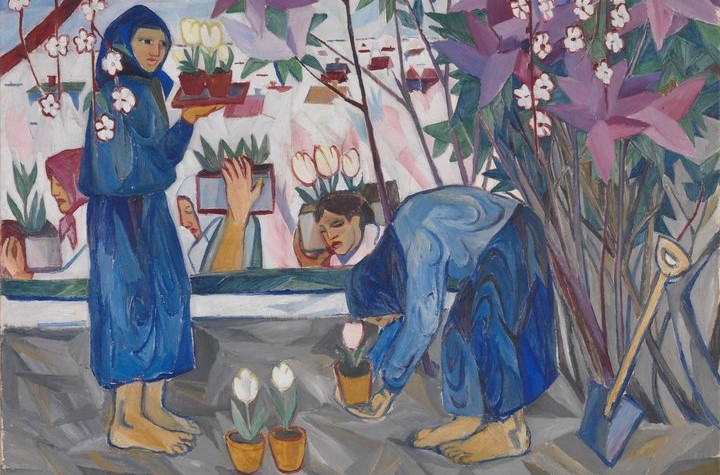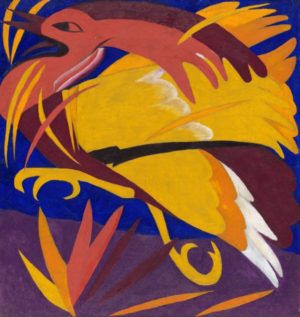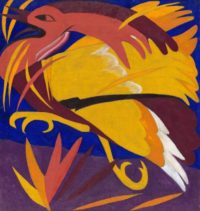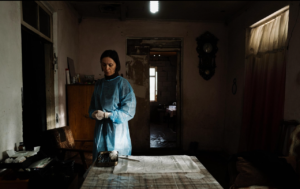Natalia Goncharova at Tate Modern

This prolific and eclectic Russian artist, Natalia Goncharova, may be relatively unknown outside the art circles, but her lifetime of work spans across two world wars. Born in Russia in 1881, to impoverished aristocrats who had made their wealth through textile production, she grew up in the Tula province amongst a farming community before a later move to France, where she resided until her death in 1962, aged 81.
This huge-scale retrospective held at the Tate Modern comprises over 160 pieces of her work, from paintings and prints to textile and costume pieces. Loaned from various galleries including the Victoria and Albert museum in London, the show demonstrates her avant-grade style and notoriety through the Modernist era as well as her liberal creative practice.
Curated through ten rooms, the display starts with The Countryside. Paintings and lithographs smeared in golden hues and a glass-cased traditional peasant costume showcase the farming region and Goncharova’s early fascination with texture and fabrics. Departing from the realism of this early work, the exhibition then moves towards sturdy sculptural elements, especially noted in her piece Peasants Picking Apples (1911), where bolder colours and stone-like figures echo famous artists like Henri Matisse.
We then move on to a highlight of this exhibition, which presents pieces from the artist’s 1913 vast retrospective that was held in the Mikhailova Art Salon in Moscow. Coining the term Everythingism from fellow artists, her work here really shows her diverse styles from folk art to impressionism. Visitors will see a wonderful collection of incomplete paintings called The Harvest (1911) and a series of larger-scale paintings, The Evangelists (1911), which show religious scenery and, at the time, were considered inappropriate representations of sacred images. This room also features Goncharova’s brief dalliance with the female nude, The Deity of Fertility (1909-10), for which she came up against much controversy.
The artist’s chameleon-like work followed her into fashion, where she collaborated with Marie Cuttoli and the House of Myrbor, and where we see gouache tapestries on display alongside intricate embroidery, before she finally moves into theatre and costume design for the infamous Ballets Russes. Visitors can expect detailed drawings and glass cases showing some of the costumes, with a particular highlight taking form in the stunning golden lamé costume for Le Coq d’Or (1937).
Colourful and absorbing, this huge exhibition seems endless, with many interesting pieces that capture Natalia Goncharova’s diverse and avant-garde approach. She was certainly a radical female artist who challenged the male-dominated art scene and produced some fantastic, groundbreaking work for us to admire.
Ezelle Alblas
Featured Image: Detail from Natalia Goncharova, Gardening,
1961 © ADAGP, Paris/DACS, London
Natalia Goncharova is at Tate Modern from 6th June until 8th September 2019. For further information visit the exhibition’s website here.


























Facebook
Twitter
Instagram
YouTube
RSS